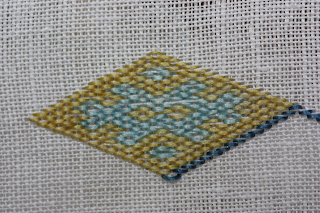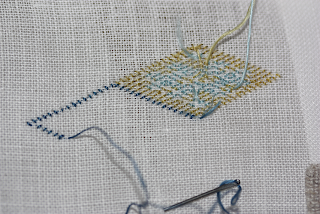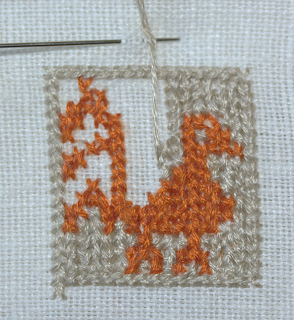During the past two days, I stumbled across some very awesome and teeny-tiny stitchery. Check out these websites showing miniature stitchery of landscapes on background skies painted with textile colouring and embroidery for dollhouses in scale 1:12 (scroll down a bit, to "Beispiele"). While personally I'm not really a fan of petit point (contintental tent stitch on the Wikipedia page), because there's more embroidery thread in the back of the work than in the front, and I am much too cheap for that, those examples on the website are incredibly impressive and almost make me want to try it.
Just almost, don't you worry. I'll stick with my nice, large stitches over two threads on 20-threads-per-cm linen for a good while longer.
And finally a really nice video (h/t to Arachne, who facebooked this) with indubitable proof that textile works, creativity and innovation are never very far from each other:
Just almost, don't you worry. I'll stick with my nice, large stitches over two threads on 20-threads-per-cm linen for a good while longer.
And finally a really nice video (h/t to Arachne, who facebooked this) with indubitable proof that textile works, creativity and innovation are never very far from each other:








